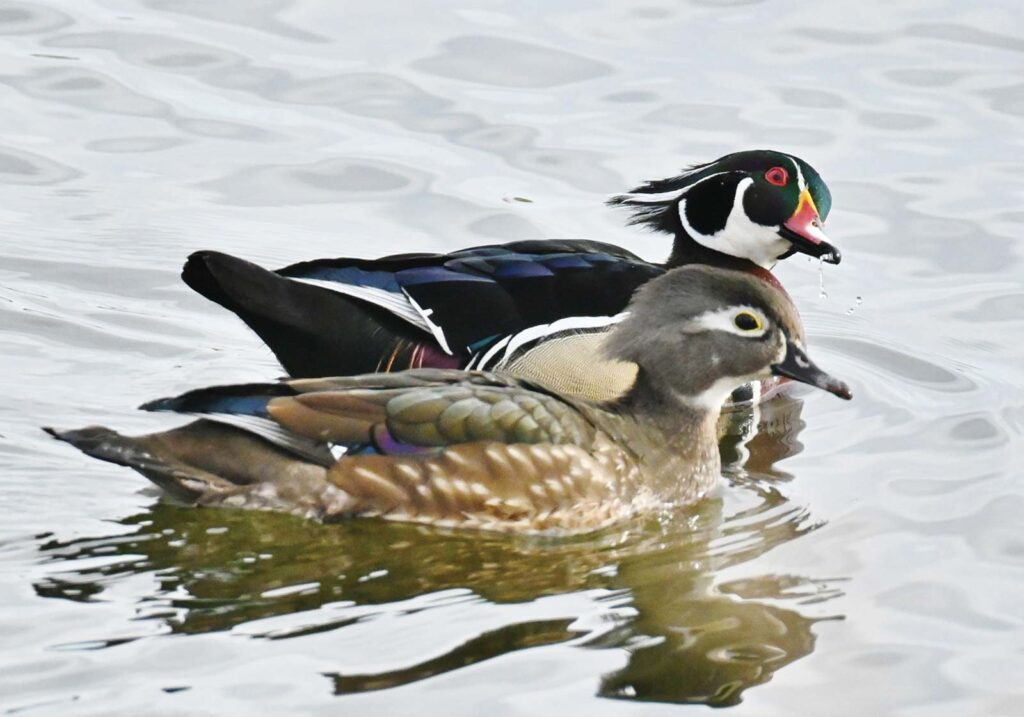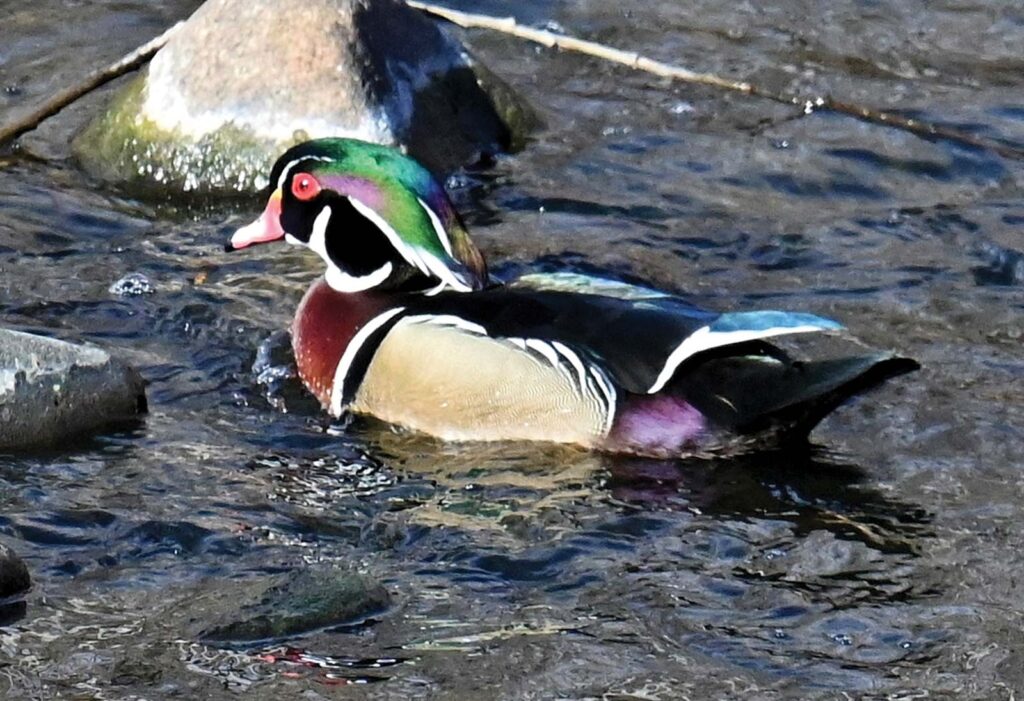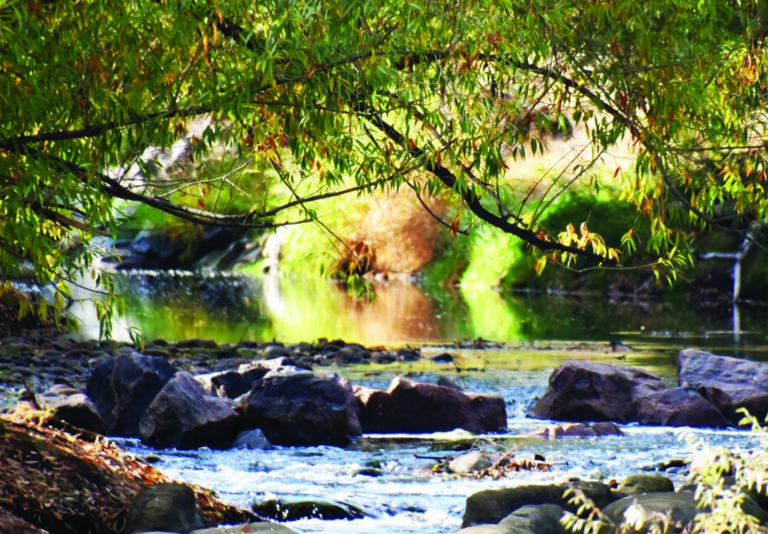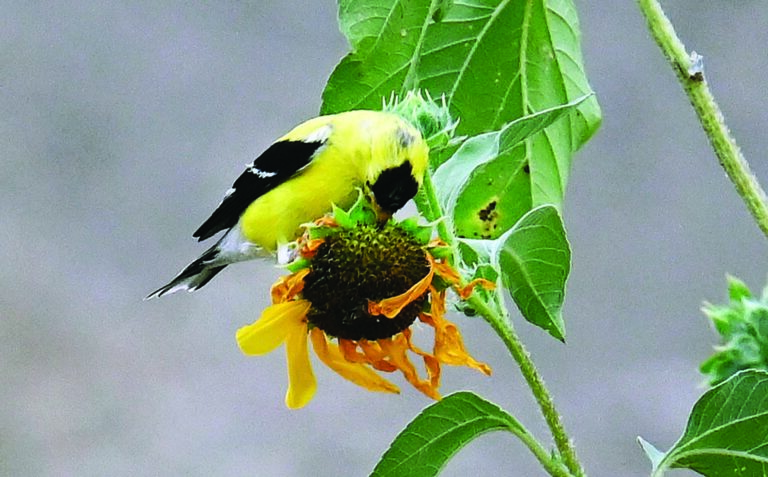Happy November nature lovers. Ken Hall, aka Bird Nut here.
Autumn is a time of fashion changes. If you’re an experienced birder the bright colors of summer are shoved to the back of the t-shirt drawer. Dingy weathered, flannel shirts and coffee-stained shredded jackets make their appearance. If you’re new to birding and have to buy new make it look old before you ever head out the door. You for sure don’t want to appear a rookie.
But personal fall fashion for humanity is not what I am writing about. Fall fashion changes are most notable in creatures that wear feathers. Bright yellow goldfinches become a dull yellow. Jays lose there feathers, then grow them back to match a Colorado autumn sky.
Many of our waterfowl friends that left us in spring return to spend late fall and winter along the front range. They arrive dressed in their Sunday best plumage. The males are already checking out the ladies even though mate selection won’t occur till January. Clear Creek is an outstanding place to view the multitude of beautiful ducks.
One such duck that drives a bird nuts’ adrenalin sky high is the Wood Duck. They have been mostly absent through the summer, with exception of females with little ducklings tagging along behind. Many non-birders become birders due to the Wood Duck. They are stop-you-in-your-tracks beautiful. The males traveling mostly solo right now are our most colorful native duck. Males wear a coat of many colors. Purple, blue, green, red, and copper. They have an extremely colorful hood that will be displayed to impress the young ladies, or the competition with their beauty. One of their scientific names is Aix sponsa, meaning “water bird in a bridal gown.” The females, or hens are quite beautiful as well. They conceal gorgeous blue coloring on their wings. They have a white tear drop shaped eye ring that looks it was painted on.
Wood ducks are serially monogamous. Meaning the male will stay with a single mate till breeding occurs. Then he packs it up and goes in search of another mate. Unlike geese, where the male and the female protect the brood, the drake wood duck does not. I watched a drake Wood Duck try and push little ducklings away from a hen. He payed dearly for that. He met the wrath of a very protective mama. The reason the males do this is that Wood Ducks quite commonly have two broods. The only North American Duck to do this.
Old school has written that Wood Ducks do not nest here along the front range. Well it’s a good thing “old school” shut down. I watched a mama Wood Duck with twelve little ones all spring. Their numbers dwindled to ten. But that hen was so protective that the rest survived to gain flight. Again “old school” said the mortality for Wood Duck babies is approximately 90% . Well I watched three families in the last couple years that likely had a 90% survival rate. Could be the maturity of the hen. Or a better protected environment.
Probably the most unique aspect of a Wood Duck is their nesting behavior. They are cavity nesters. Meaning they will seek out previously used woodpecker holes. Or natural tree cavities. Due to the scarcity of nesting sites they will take to man-made nest boxes. When walking past Bass Lake look up. There is one such box there. Another is on the southeast corner of Youngfield Lake. These nesting sites can be as high as 50’. When the eggs hatch the female will fly down to the ground or nearby water and call. The babies will jump from the nest to the ground. They have flexible skeletal structure so they bounce. The hen knows how many ducklings are above and will wait till all have taken the dive. Then she leads them off to water and food. The male is already gone shopping for another mate.

You may ask how a web footed duck can land and live in a tree. Even if you don’t ask I’ll tell you anyway. They are gifted with claws allowing them to clutch on to tree limbs. It’s an amazing thing to see ducks sitting way up in a tree.
My reason for introducing the Wood Duck right now is that November is an outstanding time to see them. I snapped about a hundred photos of one just the other day. Many photos are showing up on social media right now.
Next time you are out for a stroll, stop and look a bit closer at the ducks you see. Hopefully one will be a Wood Duck.
Have a wonderful November, and a blessed Thanksgiving. Hope to see you on the trail.
You can follow my photos on Facebook, Birds of Colorado, or Bird Friends of Colorado.






